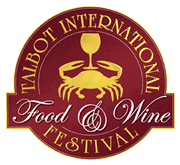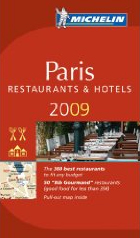Creating A Wine Cellar

- SUBSCRIBE
- ALREADY SUBSCRIBED?
BECOME A BONJOUR PARIS MEMBER
Gain full access to our collection of over 5,000 articles and bring the City of Light into your life. Just 60 USD per year.
Find out why you should become a member here.
Sign in
Fill in your credentials below.
 I recently gave a wine seminar at the first Talbot County International Wine and Food Festival (www.talbotfoodandwine.com). It was fun to pair fine wines with food, and this first annual event for our Eastern Shore community was a promising inaugural, with Ambassadors from France and Argentina also present to enjoy the festivities and preside over their respective national dinners. My seminar was on stocking a wine cellar, not an easy thing to do at today’s prices for fine French wine. But with some careful thought, you can start or continue your own wine cellar, taking advantage of the excellent 2005 vintages in Bordeaux and Burgundy as well.
I recently gave a wine seminar at the first Talbot County International Wine and Food Festival (www.talbotfoodandwine.com). It was fun to pair fine wines with food, and this first annual event for our Eastern Shore community was a promising inaugural, with Ambassadors from France and Argentina also present to enjoy the festivities and preside over their respective national dinners. My seminar was on stocking a wine cellar, not an easy thing to do at today’s prices for fine French wine. But with some careful thought, you can start or continue your own wine cellar, taking advantage of the excellent 2005 vintages in Bordeaux and Burgundy as well.
Why have a wine cellar at all? There are three basic reasons. First, you get to put down an assortment of wines that you like, so that they are available, as they might not always be at your retail wine store. Second, if you buy the wines carefully (usually, but not always, when they first appear on the market), you will buy them at the lowest price they will command. Third, with a wine cellar, you are able to mature your wines properly. Then you can drink them when they – and you – are ready. And at that date, the same wines may be either commercially unavailable, or priced out of sight.
The first rule for a good wine cellar is, of course, to choose your grandparents carefully! Then, with luck, you may share their cellar one day! You didn’t think far enough ahead for this rule to apply? Well, then, we’ll have to review the basics.
First, have a mix of wines for current drinking, and for maturing. That doesn’t always mean expensive wines. Some nice fruity Beaujolais wines for summer drinking, and hearty Cahors or Madiran for winter dinners, are not expensive wines. If you live in a region such as the Eastern Shore where seafood is plentiful, then an assortment of light Loire Valley wines, such as Muscadet or Sancerre, would be appropriate, and they are not meant to age more than a year or two. Replace the bottles as you use them, and sharpen your preferences.
I would suggest a balance of white and red wines, some fine regional choices, and an assortment of country wines. The most money will be spent on bottles of red and white Bordeaux and Burgundy, for these are wines that are long keepers, and of highest quality. The 2005 vintage is an extraordinary one in both areas. I wish I could buy them by the case, but that being increasingly out of reach, at least a few bottles should be purchased and put down for future enjoyment and special occasions.
First, what goes into your cellar should be what you enjoy. Think of those wines first, and buy some. Then, think of the longer term. I will include three wine “portfolios” at $500, $1,000 and $2,500 levels, which illustrate what you may wish to include in your own cellar.
The $500 assortment has some Beaujolais and Muscadet for summer drinking. I add half a dozen bottles of Mouton Cadet because it is a well made and usually available product that gives some idea of blended French wines. Hugel’s “Gentil” is a fine quality introduction to the white wines of Alsace, from a family that has earned respect over the centuries. Add some Madiran for the winter, and, for a great treat, a few bottles of my winter favorite, Chateauneuf du Pape. It is a festive wine, just right for your Christmas dinner, to evoke the generous spirit of Charles Dickens. You will have some Champagne of course, and Taittinger’s “La Francaise” is a light, pleasant nonvintage blend. I end with half a dozen bottles of the fine 2005 Burgundy vintage, Pouilly Fuisse White Burgundy by Jadot, and Marsannay Red Burgundy by Latour.
For the $1,000 assortment, I have added a case of excellent Bordeaux wines. You will enjoy getting to savor Sauternes with your desserts, and Chateau Suduiraut is one of the finest – it is what the French serve at their state dinners! And then, try the fine Chateau Lynch Bages white wine – not many people know about this excellent wine, made by Jean-Michel Cazes, a Bordeaux legend. There are six red classified St. Julien wines, from Chateau Branaire Ducru, Chateau Leoville Poyferre, and the excellent Clos du Marquis, second wine of Chateau Leoville Las Cases. I have chosen three different vintages, for part of the joy of having a wine cellar is to compare vintages. Your own taste will not necessarily correspond to what any wine writer has to say, and you will want to explore and develop the only taste that counts – your own, and that of your family and good friends.
At the $2,500 level, I have added to the above an assortment of excellent Burgundy wines from the 2005 vintage. We have two wonderful regional red wines for contrast, the firm Pommard by Louis Latour, and the softer Chambolle-Musigny by Domaine Andre Chopin. I have added six bottles of fine white Burgundy: three bottles of Simonnet-Febvre’s excellent “Les Vaillons” first growth offering of Chablis, and three precious bottles of Louis Latour’s first growth “Sous les Puits” from Puligny-Montrachet. And, there are two cases of 2006 Bordeaux at a good futures price: $576 for Chateau Branaire Ducru, and $379 for the classic white Bordeaux, Chateau Carbonnieux Blanc. And since you deserve it, there is a bottle of vintage Veuve Clicquot Rose Champagne as well!
$500 Investment (prices are approximate only and do not include sales taxes): TOTAL – two and one-half cases of wine. Cost $501. ( 2006 Duboeuf Beaujolais Villages (3@$8); 2006 Duboeuf Chiroubles (3@$11); 2004 Mouton Cadet (3 red and 3 white @$7.50); 2005 Hugel “Gentil” (3@$10); 2005 Quilla Muscadet sur lie (3@$10); 2005 Chateau Montus Madiran (3@$11); Taittinger brut “La Francaise” NV champagne (3@$33); 2000 Domaine Font de Michelle Chateauneuf de Pape (3@$30); 2005 Jadot Pouilly Fuisse White Burgundy (3@$22); 2005 Latour Marsannay Red Burgundy (3@$17).
$1000 Investment (same caveat): TOTAL – three and one-half cases of wine. Cost $501 (above) plus $490. TOTAL $991. The above, plus: 2004 Chateau Lynch Bages White Bordeaux (3@$35); 2001 Chateau Suduiraut Sauternes half bottles (3@$35); 2002 Chateau Branaire Ducru St. Julien (2@$40); 2003 Clos du Marquis St. Julien (2@$50); 2001 Chateau Leoville Poyferre St. Julien (2@$50).
$2500 Investment (same caveat): TOTAL – six and one-half cases of wine. And a bottle of vintage rose Champagne for a special celebration! Cost $991 (above) plus $1486. TOTAL $2477. The above two assortments, plus: 2000 Veuve Clicquot Vintage Rose Champagne ($60); 2005 Louis Latour Pommard (3@$40); 2005 Domaine Andre Chopin Chambolle-Musigny (3@$40); 2005 Louis Latour Puligny Montrachet “Sous les Puits” (3@$48); 2005 Simonnet-Febvre“Les Vaillons” Chablis (3@$28). FUTURES Case of 2006 Chateau Branaire Ducru St. Julien ($579); Case of 2006 Chateau Carbonnieux White Bordeaux ($379).



